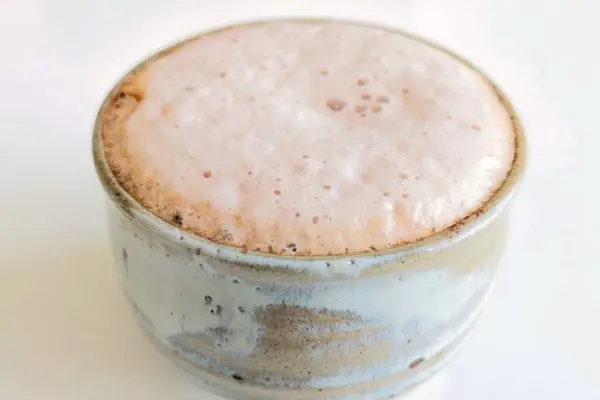Asparagus is a delicious and versatile vegetable that can be grilled, roasted, steamed, served as a side dish, or incorporated into the main meal.
However, like all fresh produce, asparagus can go bad if not stored or handled properly. It’s important to be able to tell if asparagus has gone bad to avoid food waste and prevent food poisoning.
In this blog post, we will discuss some easy ways to tell if asparagus has gone bad and what to do if it has.
Whether you’re a seasoned chef or a home cook, this post will provide you with the knowledge and tools you need to determine the freshness of your asparagus and ensure that it is safe to eat.
How To Tell If Asparagus Is Bad: 5 Signs Of Bad Asparagus
Discoloration – If the asparagus stalks have turned yellow, brown, or black, this is a sign that they have gone bad. Asparagus should be a vibrant green color when it is fresh.
1. Sliminess
If the asparagus stalks feel slimy or slippery to the touch, this is another sign that they have gone bad. Fresh asparagus should be firm and have a slightly rough texture.
2. Off Odor
Asparagus has a distinct, slightly earthy smell when it is fresh. If the asparagus you are holding has a strong or unpleasant odor, it is likely bad.
3. Softness
If the asparagus stalks are soft or wilted, they have likely gone bad. Fresh asparagus should be firm and crisp, not soft or flimsy.
4. Mold Growth
As with any food, the presence of mold is a clear sign that the asparagus has gone bad. If you see any mold on the asparagus, it should be discarded immediately.

How Long Does Asparagus Last?
Asparagus is a perishable food and will eventually go bad, even if stored properly. The length of time that asparagus will last depends on a few factors, including how it is stored and how fresh it was when you purchased it.
If stored properly in the refrigerator, asparagus will last about a week. To store asparagus, wrap the ends of the stalks in a damp paper towel and place them in a plastic bag.
Alternatively, you can place the asparagus in a jar or tall glass with a couple of inches of water in the bottom, similar to how you would store cut flowers. This will help keep the asparagus hydrated and prevent it from drying out.
If you have purchased pre-cut or pre-trimmed asparagus, it will not last as long as whole asparagus stalks because the cut ends are exposed to air and are more prone to spoilage. Pre-cut asparagus should be used within a few days of purchase.
Asparagus can also be frozen for longer storage. To freeze asparagus, blanch the stalks in boiling water for 2-3 minutes and then shock them in ice water. Drain the asparagus and pat it dry with a towel before placing it in a plastic bag and putting it in the freezer. Frozen asparagus will last for about a year in the freezer.
Asparagus, How to know if it has gone bad, How to snap it and cook it. Southern Cooking at Home
What Does Spoiled Asparagus Smell Like?
Fresh asparagus has a slightly earthy smell, but if it has gone bad, it will have an unpleasant, strong odor. If the asparagus you are holding has a strong or unpleasant smell, it is likely bad and should be discarded.
What Does Old Asparagus Taste Like?
Asparagus that has gone bad will generally have a strong, unpleasant taste. The asparagus may taste sour or ammonia-like or have a rotten or decomposing taste. Asparagus that has gone bad should not be eaten and should be discarded.
What Happens If You Eat Bad Asparagus?
Eating bad asparagus can cause food poisoning, an illness that occurs when you consume food or drink contaminated with harmful bacteria, viruses, or toxins. Food poisoning symptoms can range from mild to severe, including nausea, vomiting, diarrhea, stomach cramps, fever, and dehydration.
In some cases, food poisoning can lead to more serious complications, such as kidney failure or even death, especially in older adults, young children, and people with compromised immune systems.
If you suspect that you have eaten bad asparagus, it’s important to pay attention to your symptoms and seek medical attention if they are severe or if you are concerned about your health.
You should also throw away any remaining asparagus to prevent others from getting sick.
Is Wrinkled Asparagus Ok To Eat?
Asparagus that is wrinkled or wilted is likely past its prime and may not be as fresh as it could be. While wrinkled asparagus is not necessarily bad and may still be safe to eat, it may not taste as good as fresher asparagus.
The taste and texture of wrinkled asparagus may be compromised and may not be as tender or flavorful as fresher asparagus.
Conclusion
In conclusion, it’s important to know how to tell if asparagus is bad to avoid food waste and prevent food poisoning. Asparagus is a perishable food and can go bad if not stored or handled properly. Some signs of bad asparagus include discoloration, sliminess, off-odor, softness, and mold growth.
If you notice any of these signs, it’s best to discard the asparagus to avoid the risk of food poisoning.
To ensure that your asparagus stays fresh for as long as possible, it’s important to store it correctly and use it within a few days of purchase. Asparagus can be stored in the refrigerator or frozen for longer storage.
If you are unsure about the freshness of your asparagus, it’s always better to err on the side of caution and throw it away rather than risk food poisoning. By following these simple guidelines, you can enjoy fresh, safe asparagus as part of your meals.
- Jet’s Ranch Recipe: Make The Famous Dip At Home - April 12, 2025
- James Hemings Macaroni And Cheese Recipe – History On A Plate - April 3, 2025
- French Dip Squares Recipe – Better Than A Sandwich! - March 25, 2025



1 thought on “How To Tell If Asparagus Is Bad: Avoid Food Poisoning”